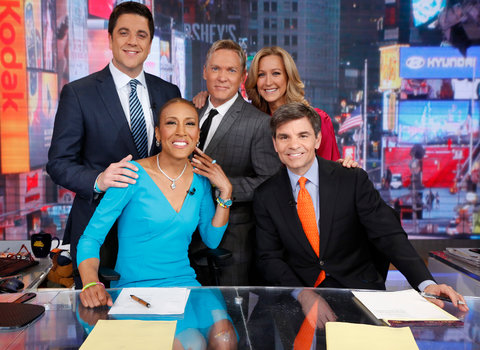Three recent hashtags were #balenciaga shoes, overstuffed #hermes tote and #prada sunglasses.
“I have a bag and shoe addiction,” said Ms. Chen, 33, in a recent interview, clad in a decade-old leather jacket from Topshop and a Proenza Schouler printed dress she bought on sale, part of her hair dyed in rainbow colors. “If I were a doctor or a lawyer, I’d still have it.”
In fact, she almost became a doctor. After attending the Brearley School in Manhattan, where she wore braces for six years and was, in her words, “delightfully un-self-aware” and “a late bloomer,” Ms. Chen studied pre-med at Johns Hopkins before turning to a career in media.
The question now is whether she can resuscitate the ailing Lucky, the Condé Nast shopping magazine that seemed avant-garde when it was started by Kim France in 2000, but has suffered in recent years.
Circulation has remained steady at around 1.1 million since the previous editor, Brandon Holley, took over in September 2010, according to the Alliance for Audited Media. But ad dollars were down over 10 percent in the second quarter of 2013 compared to the same period in 2012, according to the Association of Magazine Media.
Anna Wintour, who hired Ms. Chen to consult on the magazine last spring and appointed her editor in June in one of her first major moves as Condé Nast creative director, declined requests to comment. But many industry observers believe the promotion of Ms. Chen — who is social-media savvy and casually tweets about everything from Jane Austen to the thief who stole her credit card (she tracked him down and was considering calling his mother) — may represent a turning point not just in the history of Lucky, but fashion magazines in general.
Leah Chernikoff, 31, the editorial director of Fashionista.com, called Ms. Chen “the first editor in chief of our generation.”
“I don’t think posting selfies means she’s not going to be good at this job,” Ms. Chernikoff said. “She has all of the background you want from an editor in chief. She’s paid her dues.”
Ms. Chen grew up in downtown New York. Her mother is from Taipei, her father from Shanghai, and they own a consulting textile import-expert business. “For a lot of children of immigrants, what happens is your parents want you to do something very linear that they can understand,” she said. “I had an aptitude in sciences and never really questioned it.”
But, she said, her mother is a “voracious shopper” who would make an annual trip to Milan to stock her wardrobe. “I borrowed my first Chanel bag from her,” Ms. Chen said. Now, following her daughter on Instagram, “My mom will be like, ‘Please tell me you didn’t buy that Balenciaga bag.’ And I’ll say, ‘I got it from you.’ ”
In her junior year of college, Ms. Chen applied to 20 summer internships, including ones offered by MTV and the William Morris Agency, and took one at Harper’s Bazaar. Recalling what she wore on her first day there, she said: “I bought my first pair of pointy-toed Miu Miu shoes with a kitten heel from Barneys. They were $200 and it was a big deal. I wore them with a pleated black Benetton skirt and a white shirt. I looked like a waitress.”
She knew immediately, she said, that she wanted to work in magazines.
In 2000 Lucky arrived on stands, with its then-radical truncated articles and pages of product recommendations that in some ways presaged the argot of the Internet. Ms. Chen, who once e-mailed a Microsoft Word document with columns detailing the merits of a Mulberry Alexa bag and a Proenza Schouler PS1 bag to a friend agonizing over the items, said she was an immediate fan.
“It broke down the barrier between magazine ivory tower, and you felt like you were friends with the magazine,” she said. “It was the first magazine I read where I knew who all the editors were and was the first place I saw street style photographed. What Lucky pioneered, now everybody does.”

Article source: http://www.nytimes.com/2013/08/15/fashion/eva-chen-trending-now-at-lucky-magazine.html?partner=rss&emc=rss

